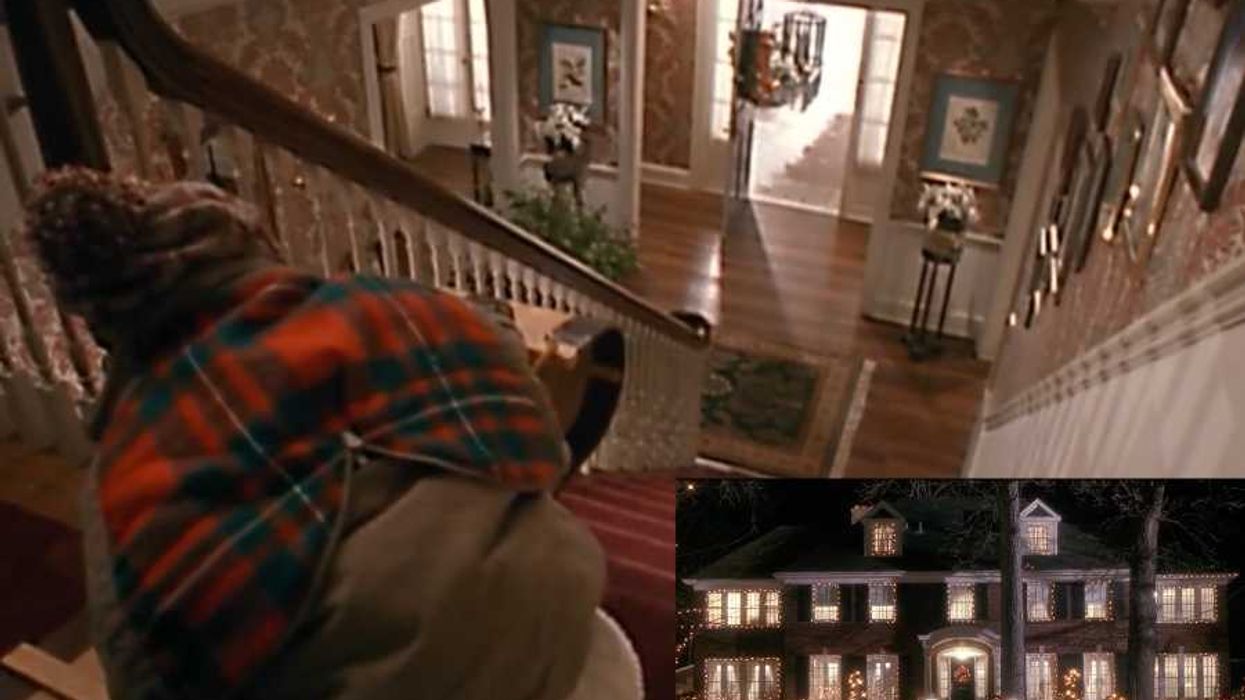All it takes is traffic.
For years Los Angeles has been known as a world capital for one thing more than any other. The motion picture industry, you say? Not quite...That’s been moving out of town for years. Nope, it’s traffic.
Yes, once again L.A. has been declared by several surveys as the most trafficky city in the country, and it’s clear to most who study these things that widening freeways, syncing traffic lights, and adding new toll lanes aren’t going to do a thing to stop it.
Since you can’t force people out of their cars, only one thing that can alleviate congestion in a place as sprawling, peopled, and densifying as Los Angeles: Mass transit.
The bizarre thing is that the city was once known for its streetcar suburbs and its Pacific Electric trolley, which boasted one of the world’s most extensive systems of tracks. Then the car came along and, after World War II, completely took over. The massive expansion of the city coincided with our country’s new highway boom, and the rest, as they say, is history.
But in the midst of all this car craziness, Angelenos, their various government agencies, and several visionary designers have been proposing mass transit schemes for more than a century. Some of them are incredibly innovative, some of them, well, just crazy. Now that we’re becoming more and more used to driving 0 miles per hour on the 405 freeway, and running into rush hour traffic on the 10 freeway at 2 p.m., we’re getting more and more willing to take a look at something—anything—other than the car.
So here are some of the most innovative schemes that my co-curator Greg Goldin and I compiled as part of our upcoming exhibition, Never Built: Los Angeles, which opens at the A+D Architecture and Design Museum on July 27. We’re not advocating that we install these plans, but we are advocating for Angelenos to push for a solution that’s just as innovative for today’s time. Do us a favor. Let’s not let the next round of great ideas to solve the car crush become “Never Built.”
1.) Kelker and De Leuw Subway Plan, 1925
Proposed back in 1925 (yes, 1925), the plan, laid out by nationally recognized transportation consultants Kelker and De Leuw, recommended the immediate construction of 153 miles of subway, elevated rail, and street railways at a projected cost of $133,385,000. Strong opposition by the business community and the Los Angeles Times to planned sections of elevated rail, and voters’ reluctance to tax themselves to benefit the privately held railways, sunk the plan. Subsequent subway proposals continued to roll out all the way until the 1980s, when a half cent sales tax finally paved the way for the city’s first subway lines.
2.) Airtram, 1936
Proposed by Joseph Strauss, chief engineer of the Golden Gate Bridge, the Airtram was designed to offer “the speed of the airplane, the comfort and quiet of the automobile,” as Strauss put it. Putting transit above the maze of trolley wires that engulfed the city, the system involved suspending aluminum cars from steel and concrete armatures. They were then quieted with cushioning devices, silent drive motors, and noiseless breaks. Strauss’ plan was promoted in Los Angeles by real estate developer George Rowan, but after Strauss died in 1938, Rowan gave up on his quest.
3.) Carveyor, 1956
The Carveyor system—unveiled in 1956—was the product of an unheralded but important Los Angeles architect named Samuel Lunden, who designed, among other things, USC’s Doheny Library. The plan consisted of a conveyor belt upon which strings of six-passenger pods—supported atop large columns— swept silently about the town. Passengers would hop on and off the cars from moving sidewalks, synchronized at one and a half miles per hour. Once the cars left the stations, they’d speed up to 15 miles per hour. The four loops of the system, each running through downtown, would cost a total of $8.8 million.
4.) Monorail, 1960s
Because of its speed and ease of construction, the monorail has been one of the most popular proposals for mass transit in Los Angeles. Two of the most promising concepts came in the 1960s from the companies Alweg and Goodell, which both proposed building their entire systems for free in return for collecting all fare box revenues. Alweg, which built the Seattle and Disneyland Monorails, proposed a sleek design almost identical to what it built in Seattle for the 1962 World’s Fair. The 43-mile-system, fanning out from downtown, would have cost $187.5-million. Goodell’s cars, which looked somewhat like flashy Cadillacs, would have reached out 60-miles, and cost $214 million. Both projects were doomed by city officials, who ironically, wanted to build a subway that wouldn’t happen for another 20 years.
5.) People Mover, 1970s
A pet project of L.A.’s Community Redevelopment Agency, the People Mover was precipitated by federal funding that became available for such a project in 1969. Over the next decade a slew of proposals came forward, most of them consisting of small, automated cars, riding on air cushions along a roughly three-mile route through the center of downtown. All the ideas died in the 1980s, when newly elected president Ronald Reagan pulled the plug on the money for anything like it.
6.) Maglev, 1990s to present
Several air-cushioned high-speed trains have been proposed for the city over the years, including a route between LAX and Palmdale airports in the 1970s. But the most advanced was the Maglev, or magnetic levitation system, using magnets to propel trains at high speeds without wheels, axles, or bearings. Back in the 1990s the government was pouring millions into Maglev research, and proposing another LAX-Palmdale route, this time a magnetic one, which was rejected by Caltrans in favor of more freeways. The doomed proposals continued, including Maglevs from Ontario Airport to West Los Angeles, from Irvine to Palmdale, and from Anaheim to Las Vegas.
Join us for our Fix Your Street Challenge on the last Saturday of May. Click here to say you'll Do It and be sure to share stories of transportation innovation all month.
Images in order of appearance via Los Angeles County Metropolitan Transportation Authority Library & Archive; Huntington Library; Huntington Library; Los Angeles County Metropolitan Transportation Authority Library & Archive; Los Angeles County Metropolitan Transportation Authority Library & Archive; Parsons
















 Otis knew before they did.
Otis knew before they did.